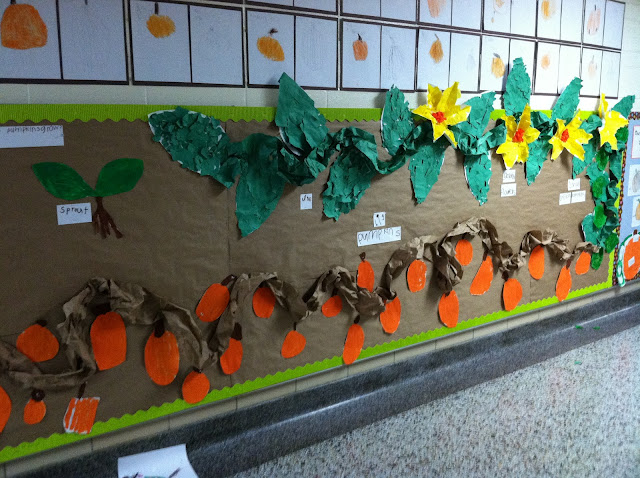Our trip to the Pumpkin Farm led perfectly into our exploration of pumpkins.
We began our study, by using our senses to explore pumpkins. We sketched the pumpkins we picked from the farm using different materials. We first created a pencil sketch using pencil and coloring it with crayons. Next, we sketched our pumpkins using black ink pens.
Finally, we sketched and then carefully painted our pumpkins.
We read The Pumpkin Circle by George Levenson.
We then began to explore the parts of a pumpkin even further. We labeled the outside of a pumpkin: stem and skin.
Then, we worked together to explore the inside of a pumpkin: flesh, pulp, and seeds.
We took all of the seeds outside of the pumpkin and laid them on a tray. Before counting how many seeds were inside of our pumpkin, we each estimated how many seeds we thought were inside of the pumpkin. We counted the seeds in groups of 10 and found out there were 238 total seeds inside of our pumpkin!
We explored pumpkin seeds by sketching their shapes and labeling our sketch. We also tasted baked pumpkin seeds. The majority of our friends loved the pumpkin seeds!
Now that the inside of pumpkin has been cleaned out, we decided to carve a face into our pumpkin to create a jack-o-lantern.
We voted which shapes we would like to carve the eyes, nose and mouth. The shapes with the most votes were...
After about a week of enjoying our jack-o-lantern inside, we noticed that some changes were taking place with our jack-o-lantern. We read the book Pumpkin Jack by Will Hubbell. We learned that our jack-o-lantern was decomposing. We learned that a decomposing pumpkin can actually be good for the earth. We drew our observations of the jack-o-lantern before we took it outside and placed it in our garden.
The next day we were surprised to see our jack-o-lantern already decomposing into the earth!
Here is our pumpkin life cycle documentation that is outside of our classroom.
We learned so much through our study on pumpkins and integrated all four content areas into our study: literacy, math, science, and social studies. On our Promethean Board, we worked on a venn diagram comparing apples and pumpkins. We connected our learning and documented several similarities between apples and pumpkins. We had a great time working towards meeting our learning targets and becoming pumpkin experts!
























No comments:
Post a Comment